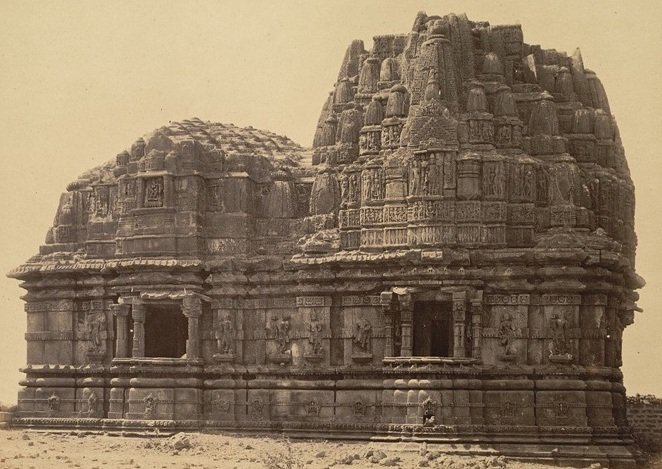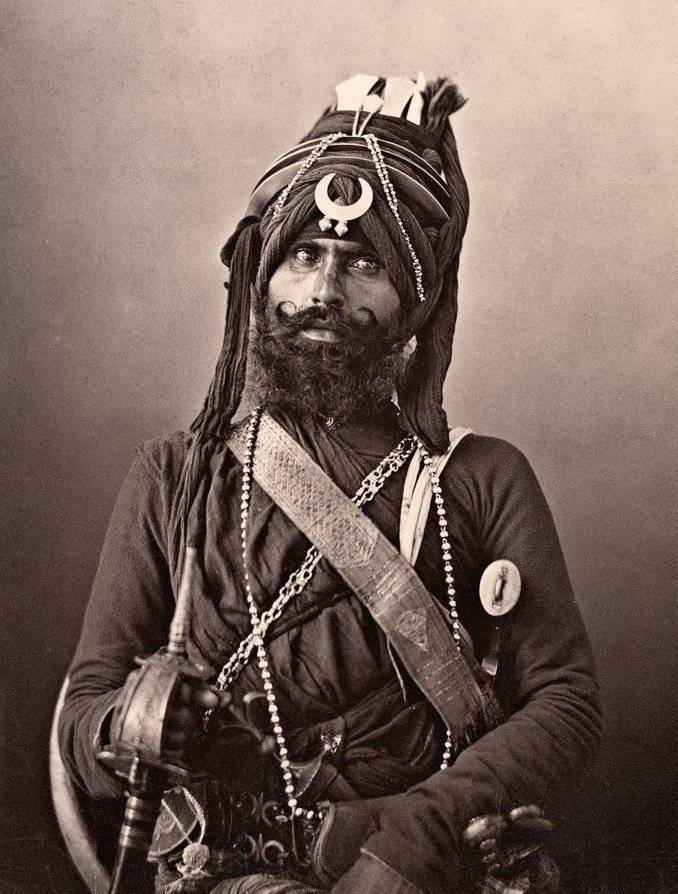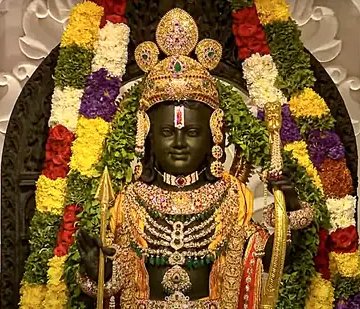In the joyous moment of the auspicious muhurta on January 22, 2024 at Ram Mandir Ayodhya , when Ram Lala reclaimed His seat at His birthplace, bringing an end to a 500-year exile, Hindus worldwide busted into ecstatic celebrations! The long-awaited return marked the culmination of five centuries of resilience, casting aside humiliation and heralding the glorious resurrection of the temple at its original site—a powerful symbol of the triumphant reclamation of lost pride.
Table of Contents
Global Media’s Distorted Lens: Unraveling Biased Narratives on Ram Mandir Temple
Nevertheless, the global media spun this event in a thoroughly concocted and distorted manner, depicting it as the emergence of a fundamentalist Hindu India akin to the rise of the Nazis in Germany.
CNN’s Skewed Reporting on Ram Mandir Temple: Unveiling The Hidden Agenda
CNN, for instance, reported astonishingly that the Ram Mandir is erected on contested grounds where a mosque has stood since the 16th century—an issue seized by the ruling Bharatiya Janata Party for their political motives under the guise of cultural concerns.
https://www.cnn.com/videos/world/2024/01/18/ram-mandir-ayodhya-contd-lon-orig-tp.cnn
In their relentless effort to label the entire Ram Mandir movement as a mere political ploy, the tendentious editors at CNN slyly omitted any reference to the Archaeological Survey of India’s scientific evidence. This evidence clearly established that the 16th-century mosque was constructed by razing a Hindu temple, a stark reminder of the persecution and genocide of Hindus at the hands of the Jihadi forces. By purposefully steering clear of these facts, CNN shamelessly perpetuates a biased narrative, intentionally casting a negative light on India and its predominantly Hindu population.
BBC’s Half-Truths on Ram Mandir Temple: Majoritarianism or Justice?
In a blatant display of half-truths, the BBC’s assertion that the temple was constructed over a razed mosque conveniently omits the crucial detail that the mosque itself was initially erected by demolishing a Hindu Ram Mandir (temple).
The BBC goes on to assert that the Supreme Court of India allocated the land to the Hindus for the temple, insinuating a narrative of majoritarianism prevailing in the country’s highest court against innocent and vulnerable minorities. Notably absent from their account is the fact that the court’s decision rested on a multitude of archaeological and literary evidence vividly narrating the tale of a Hindu temple’s demolition and shamelessly hiding the fact that the temple’s construction stands as a rectification of a historic injustice imposed on the soul of India by invading foreign forces.
New York Times on Ram Mandir Temple: A Tapestry of Falsehoods
The New York Times, aligning with the same biased stance as their Western counterparts, depicted the establishment of the Ram Mandir in Ayodhya as the demise of secular India, elevating their misguided narrative to unprecedented levels and saturating it with outright falsehoods.
In a striking display of misinformation, the New York Times asserts, for instance, that “India’s founding fathers took great pains to keep the state at arm’s length from religion.” Conveniently omitted from their account is the fact that images of Rama, the primary deity of the temple in question, were originally engraved on the constitution of India alongside Sita and Laxman, only to be expunged by the pseudo-secular governments that succeeded. This blatant omission reveals a deliberate effort to peddle a false narrative, as the newspaper fails to acknowledge the historical truth and the subsequent alterations imposed by opportunistic administrations.
Curiously enough, The New York Times contends that the term “secular,” allegedly pivotal to the Indian constitution and its founding fathers, was never originally included in the document. It was, in fact, forcibly injected by Indira Gandhi in 1976 during the oppressive emergency period, a time marked by the ruthless suppression and obliteration of democracy. This addition had nothing to do with the vision that India’s founders initially conceived for the nation. The subtle manipulation of facts underscores a cynical attempt to distort the historical context and misrepresent the true essence of India’s constitutional principles.

Historical Context: Somnath Temple’s Resilience The Ram Mandir Temple Precursor
Contrary to misconceptions, the visionary founding fathers of India held a steadfast commitment to the nation’s identity as a cultural civilization, exemplified by the reconstruction of the Somnath Temple. This revered symbol of Indian culture had been repeatedly desecrated by invading Muslim forces—from Mahmood of Ghazni in 1026 AD to Aurangzeb in 1665. Despite these challenges, Hindus resiliently regrouped, reclaiming their heritage each time. The temple’s post-independence revival, orchestrated by the founding fathers, stands as a powerful testament to their unwavering belief in resurrecting our cultural legacy. Their approach was far from forsaking or burying our illustrious past in the name of minority appeasement, a deviation that unfolded in subsequent times. Instead, they embraced a nationalist pride that celebrated and preserved our glorious cultural heritage.
Hindu Response: Legal Battle and Cultural Patience – The Ram Mandir Saga
In conclusion, the portrayal attempted by the Western media concerning the reconstruction of the Ram Mandir Temple in Ayodhya seems to suggest that it was a manifestation of the majority Hindus asserting dominance and imposing the construction of the temple. However, the reality is quite different. Hindus exhibited patience over a span of 500 years, engaging in a determined legal battle to rightfully reclaim their ownership of the temple underneath. Ultimately, they secured their rights through legal and constitutional means.

Emotional Outbursts: Understanding Historical Context of Violence Related to Ram Mandir Temple
Certainly, there were instances when emotions ran high, leading to notable events such as the forceful takeover of the Mosque complex by Nihang Sikhs who conducted the Yagna in support of Rama in 1858 during pre-independence India, and the subsequent demolition of the disputed structure in 1992. However, it’s important to acknowledge that these moments represented emotional outbursts fueled by the prolonged delay in the judgment, rather than being the norm. In general, the movement predominantly adhered to peaceful means.

Ram’s Significance: Beyond Deity Status – Why Ram Mandir Temple is Important
Ram holds a significance in Hinduism that surpasses the roles of Christ for Christians or Prophet Mohammed for Muslims. His importance transcends, resonating deeply within the essence of every Hindu. Much like how a Christian instinctively utters “Oh God!” in times of perplexity, or Muslims invoke “Allah,” the Hindu heart echoes with “Hay Ram.” Ram stands as the very soul and nucleus of Hindu culture—the Alpha and Omega. This profound connection is exemplified by the historical destruction of His temple by Islamic invaders at His birthplace, replaced by a mosque and named it Masjid-i-Janmsthan meaning the mosque built at the birthplace (of Lord Ram). It wasn’t merely the desecration of a temple but a symbolic obliteration of an entire culture. Despite this, Hindus patiently awaited and pursued their legal case, seeking their inherent right to worship their Lord at His birthplace.
Comparative Analysis: Mecca, Vatican, and Shree Ayodhya Ram Mandir Temple
In a comparative analysis, envision a scenario where Mecca or the Vatican faces destruction and takeover by hostile foreign forces. Picture the fervent response of these respective communities in such a situation and all the ho-halla and calls for jihad and violent crusades that would follow. Drawing parallels with the Hindu response to the reconstruction of the Ram Temple can offer the global consciousness a profound appreciation for their exceptional resilience. It becomes evident that the Hindu community, confronted with a 500-year wait, demonstrated an admirable spirit by patiently allowing the law of the land to unfold and securing their lawful right at their holiest site of worship. This juxtaposition not only underscores the remarkable patience of Hindus but also accentuates their unwavering commitment to justice and cultural heritage.
Hindu Phobic Western Media: A Derogatory Stance on Ram Mandir Temple
Regrettably, the Western media, instead of acknowledging and celebrating the peaceful struggle of the majority community and their adherence to the rule of law, shamefully distorts it as an emergence of Hindu fundamentalism. This reprehensible misrepresentation not only fails to recognize the resilience and patience displayed but also reflects a biased and derogatory stance towards the genuine efforts of the Hindu community to build Ram Mandir back at the place where it was demolished by invading brutes.
